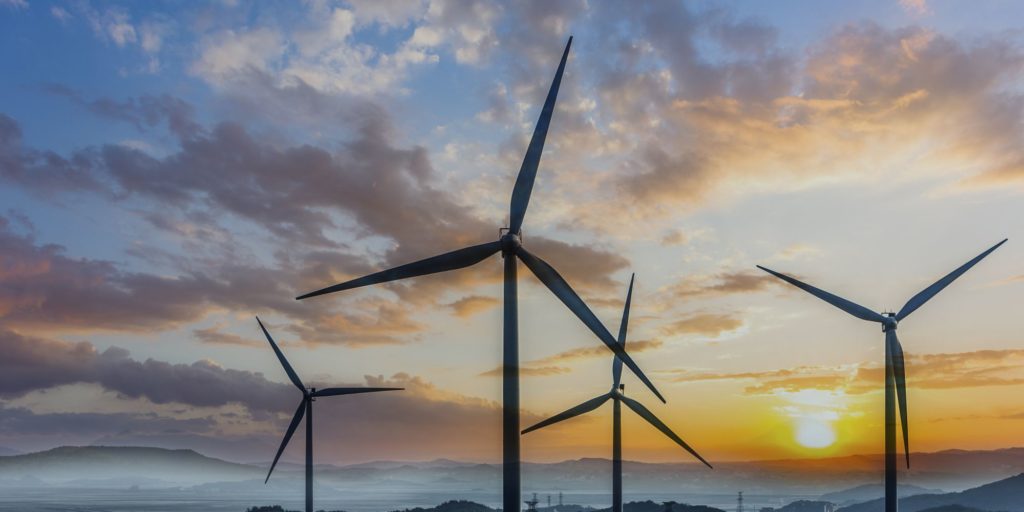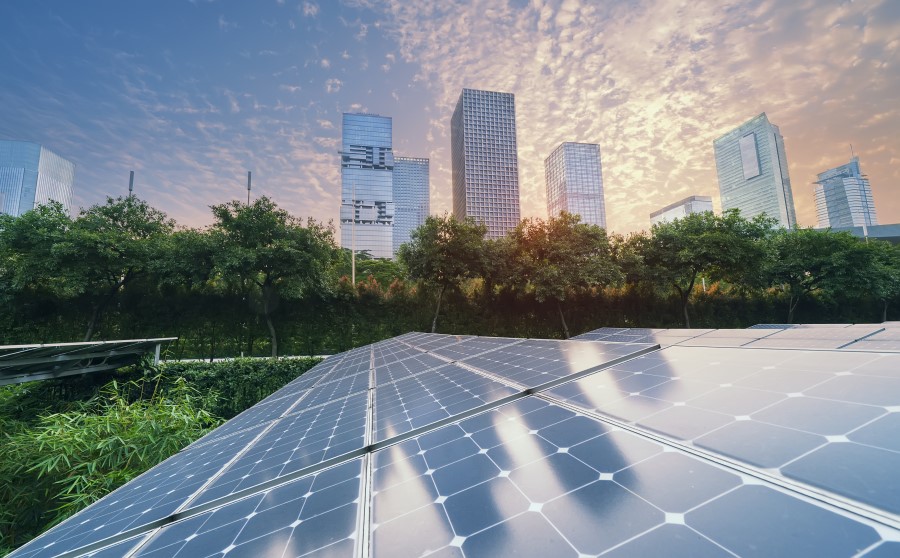CERAWeek 2023: Microsoft launches the Energy Transition Center of Excellence
Energy organizations continue to face the complex challenge of meeting the world’s growing demand for energy while reducing emissions. But they’re not facing these challenges alone. Innovators across industry, government, and technology are joining forces and collaborating to find answers. Today, the energy industry has unprecedented opportunities to design low-carbon systems and ensure equitable, affordable access to clean energy.
To move toward a secure and sustainable future, the world needs holistic solutions that optimize operational efficiency and accelerate the transition to cleaner energy. Energy leaders are turning to Microsoft for technologies that power transformation including the Microsoft Cloud, AI, machine learning, the Internet of Things (IoT), and mixed reality.
Around the world, leading organizations are leveraging digital technologies to transform their workforce, operate for the future, and create new business models with intelligent, data-driven, environmental, social, and governance (ESG) first solutions that improve performance and sustainability. I wrote about some of these innovations in my recent blog on the energy sector and the industrial metaverse, and look forward to sharing more.

Microsoft for Energy & Resources
Achieve net zero with technology innovation to deliver safe, reliable, and clean energy.
Innovative solutions to accelerate decarbonization
To meet their net-zero goals, companies need support across their energy transition journeys to reduce CO2 emissions, capture and store carbon, generate green hydrogen, repower coal, and optimize wind turbines. To support customers across their decarbonization journeys, we’re excited to announce the grand opening of the Energy Transition Center of Excellence at the Houston Microsoft Technology Center (MTC). The new Microsoft Center of Excellence will showcase leading energy transition solutions and give customers an opportunity to learn first-hand the solutions offered by Microsoft and our global partner ecosystem.
Customers can experience a new energy future through immersive, interactive exhibits on leading energy solutions built by our partners and powered by Microsoft. These solutions are innovative, transformational, and pivotal to companies achieving their sustainability goals and are also grounded in the urgent priority of providing secure and reliable energy access and equity for all. Microsoft Energy Transition Center partners and technologies include:
- AspenTech and Emerson:Digital technology pathway for scaling up the hydrogen economy. AspenTech and Emerson solutions are designed to help address the challenges of capital expenditure (CAPEX) and lifecycle operating cost of production, supply chain, and storage infrastructure to expedite speed to market.
- Bentley: Going digital in offshore wind. Bentley provides digital solutions to help stakeholders work together more effectively, design, implement and operate offshore structures, and deliver a clear line of sight across the whole operation.
- Cognite: Cognite data fusion for sustainability. Cognite Data Fusion automates the ingestion, consolidation, contextualization, and access to operational, engineering, and IT data from multiple sources to enable operators to take action to help reduce emissions and waste in real-time.
- EY: Hydrogen Pathways to further decarbonization. EY’s Hydrogen Pathways is a molecular accounting platform, combining asset planning with operational insights to create a holistic view for hydrogen production.
- Honeywell: End-to-end enterprise emissions management. Honeywell Emissions Management Suite is an end-to-end solution that provides greenhouse gas emissions measurement, monitoring, reporting, reduction, and more to drive insights that support the company’s decarbonization goals.
- Schneider Electric: Prosumers and the new energy landscape. The Schneider Home solution intelligently orchestrates home energy by bringing together utility power, solar, battery storage, and EV chargingoffering unparalleled intelligence to homeowners.
- SLB: For a balanced planet. SLB solutions include using AI, automation, and comprehensive data management to create new levels of efficiency and performance across the Carbon Capture Utilization and Storage (CCUS) value chain.
- Switch Energy Alliance: Energy equity and energy access. Switch Energy Alliance’s global video and web-based approach engages students and general viewers in a positive conversation to work collaboratively on energy challenges.
- TerraPraxis: TeraPraxis REPOWER. TerraPraxis REPOWER is a standardized system designed to repurpose existing coal plants to produce clean energy.
Learning and connecting with global energy leaders at CERAWeek 2023
The Microsoft team is participating in CERAWeek 2023, the preeminent annual gathering of energy, finance, and technology leaders, on March 6 to 10, 2023 in Houston, Texas. The event is focused on navigating a turbulent world through the lens of energy, climate, and security. Microsoft energy leaders will share perspectives on topics that include unlocking data with cloud-based technologies, decarbonization solutions, alternative energy sources, and digitalization of the grid.
At CERAWeek 2023, I am looking forward to joining a panel with leaders from Mitsubishi Heavy Industries, Repsol, and Schneider Electric to discuss Company Strategies to Lower Emissions. Critical issues we’ll address are new energy technologies needed for the energy transition, how effectively they are supporting sustainability goals, and the role of digital technology in enabling and accelerating these new energy scenarios.
The Microsoft team will also participate in sessions that include:
- Hydrogen in Backup Power Applications with Joanna Mainguy, Industry Director EMEA, Energy and Resources Industry.
- Powering the Future: Digital Solutions for a Resilient, Secure, and Low-Carbon Grid with Per Christian Honningsvaag, Business Leader EMEA, Energy and Resources Industry.
- Scaling Innovation for Energy Transition Solutions with Dave Wisenteiner, General Manager, Worldwide Energy and Resources Industry.
- Successful CCUS Scale-ups: Dependent on Integrated Hubs and Markets? with Sverre Brandsberg, Chief Technology Officer, Microsoft Cloud for Industry.
- Unleashing the Power of Subsurface Data with OSDU in the Cloud with Stacey Lusk and Neeraj Joshi, Principal Program Managers, Worldwide Energy and Resources Industry.
Enabling carbon capture on an industrial scale
Microsoft technologies help to reshape the energy value chain at every stage, from planning and development to production, distribution, and consumption. As more governments and businesses commit to climate action plans for a greener future, we anticipate that digital solutions for energy challenges will become increasingly important. For example, in 2020 Norway updated its commitment to the Paris Agreement with an aggressive plan to cut overall emissions by at least 50 percent by 2030 compared to 1990 levels.1 As part of that initiative, the country is focusing on CCUS.
The Norwegian government teamed with Aker Carbon Capture, a consortium of three oil and gas companies called Northern Lights, and Microsoft to build a large-scale carbon capture plant at a Norcem cement factory in the town of Brevik. The energy and cement industries have a mutual interest in CCUS solutions. Because the cement industry is one of the largest producers of greenhouse gas, the solution developed at the Norcem factory is an important step in reshaping the industry. The project will become part of a nationwide system to capture emissions from multiple sources across Norway, including the energy industry.
Norway had been storing carbon dioxide in subsea reservoirs since 1996 but required carbon capture on an industrial scale to meet its goal of a nationwide system. To help solve the challenge, Microsoft engineers are building an integrated digital platform to track carbon dioxide from the point of emission to storage. The platform will track every step of the value chain, including the physical movement of carbon dioxide, its complex handling processes, and financial transactions. The new platform brings together Microsoft cloud technologies such as AI and high-performance computing to gather, monitor, and analyze data. While the first step is to capture 400,000 tons of CO2 annually at Brevik, the ultimate goal is to turn the data platform into an industry standard with the potential to accelerate movement toward Europe’s climate goals.
This project is another great example of how digital technology can be used to move the world closer to net-zero goals and speed the transition to cleaner energy. We look forward to connecting with you at CERAWeek 2023. We also hope you can experience our new Microsoft Energy Transition Center of Excellence and the latest innovations we are building with our partners to power a sustainable energy future.
Discover more
- 3 key takeaways from CERAWeek 2022 and a cleaner future for the energy transition.
- Learn more about themes and actions critical for energy transition.
- Read more about how Microsoftpartners with energy companiesto accelerate digital transformation.
- Microsoft bringsmixed reality and new immersive collaboration toolsto industrial metaverse customers.
- Learn more about how Microsoft works toenable the sustainable growth of renewablesin the mining industry.
- Enable yourdata to do more in the cloudwith our energy data manager.
- To learn how to attract, train, and retain employees for your next-generation workforce, visit our transform your workforce employee retention website.
- To learn more about Microsoft for Energy and Resources, visit ourfuture of energy industry solutions website.
1Norway’s long term low emission strategy for 2050.
The post CERAWeek 2023: Microsoft launches the Energy Transition Center of Excellence appeared first on Microsoft Industry Blogs.
Source: Microsoft Industry Blog

